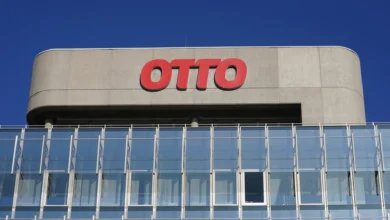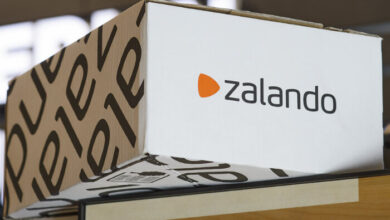AZ München: The Voice of Munich’s Evening Press

Introduction: What Is “AZ München”?
If you’ve come across “AZ München” and wondered what it refers to, you’re not alone. Simply put, AZ München is the colloquial name for Abendzeitung München (Munich Evening Newspaper), often shortened to “AZ.” It’s a Munich-based tabloid (or boulevard) daily that has long been a fixture of the city’s media landscape. Over the decades, AZ München has adapted, survived crises, and evolved its format and reach, always with one foot firmly planted in local life.
This article will explore the history, editorial approach, digital transformation, challenges, and future prospects of AZ München. I’ll aim to write as someone who understands the newspaper business, but in a relaxed, accessible way
Origins and Early Years
Founding and Mission

AZ München was founded on 16 June 1948 by Werner Friedmann in postwar Munich. At a time when Germany was rebuilding, the idea was to offer Munichers a tabloid-style newspaper with local flair, combining lively reporting with intelligent content aimed at not just the masses, but also readers with broader interests.
From its early days, AZ sought a balance: it wanted to be accessible, attention-grabbing, and vibrant — but not cheap sensationalism. It aimed to reflect Munich’s everyday life, its politics, its social dynamics, and its sports scene. Over the years, that dual identity (popular + local + somewhat serious) would become central to its brand.
Growth and Peak Years
In its golden decades (1950s–1980s), AZ grew steadily in circulation. Under Friedmann’s leadership, the paper expanded its readership across Munich and its environs.It competed with other local tabloids, but its mix of city news, personalities, culture, and sports gave it a distinctive voice.
It wasn’t just about quantity: the editorial style developed recognizable traits — lively headlines, human-interest stories, strong local orientation. These features attracted both casual readers and those interested in Munich’s pulse. At times, circulation numbers reached as high as 300,000 daily in its heyday.
Financial Strains and Restructuring
The turn of the 21st century brought challenges for many print media, and AZ was no exception. Declining advertising revenue, rising production costs, and competition from digital platforms squeezed margins. By 2014, AZ München filed for bankruptcy. The Friedmann family, which had long managed the paper, had to relinquish control, and the operation was scaled down.
That moment marked a turning point: the paper had to redefine itself, focusing more sharply on core strengths (Munich local reporting, culture, sports) and streamlining operations. Since then, AZ has continued under new ownership (Attenkofer media group) with a leaner staff and a renewed focus on digital transformation.
Editorial Identity: What Makes AZ München Unique
Local Orientation and City Life
One of the defining features of AZ is its deep engagement with Munich’s local reality: neighborhoods, city politics, social issues, local crime, municipal decisions, events, and cultural life. The paper often runs human-interest stories about city dwellers, interviews with local figures, and coverage of city infrastructure debates. This local flavor is its distinguishing edge.
Because the readership is local, AZ can afford to place great value on relevance: what’s happening in Giesing, Schwabing, or Pasing matters. Its news desks often prioritize municipal decisions, traffic disruptions, school stories, and how city policies affect everyday people. This gives readers a tangible connection to the city’s machinery.
Balancing Tabloid Style and Substance
Though AZ is a boulevard/tabloid paper, its editorial stance is not purely sensationalist. It often combines bold headlines and eye-catching visuals with deeper reporting. You’ll find investigative pieces, cultural commentary, and political coverage alongside “lighter” fare like celebrity news or human-interest columns.
In that sense, AZ walks a tightrope: it wants to attract broad readership (hence more accessible style), but it also wants to preserve credibility. Some critics might call it “middle-brow,” but for many in Munich, that’s precisely its appeal: not too highfalutin, not too shallow.
Sports, Culture, and Society as Anchors
Sports (especially FC Bayern, TSV 1860, local clubs) are a backbone of AZ’s content. Local fans turn to it for previews, match reports, interviews, and color commentary. Because football is so central to Munich’s identity, coverage here helps maintain loyalty.
Culture — theatre, film, exhibitions, music — also gets good coverage, which helps the newspaper appeal to readers who want more than headlines. And then there are the social topics: migration, integration, housing, urban development — all part of the everyday fabric of Munich that AZ reports on.
Digital Transformation and the ePaper Era
Launching the ePaper and App
As print margins shrank, AZ moved aggressively into digital. It launched its AZ ePaper platform where readers can view the full print layout in digital form. The ePaper allows reading on computers, tablets, and smartphones with interactive features, article modes, and archived issues.
They also introduced a dedicated AZ München app (available on Google Play and other platforms). The app offers full access to the digital edition, puzzles, and news, and even a subscription via mobile billing. This move reflects how AZ recognized that “print + digital” must now go hand in hand.
Adapting Content and Format
In transitioning to digital, AZ had to rethink not just distribution but also storytelling. For example: optimizing headlines for clicks (without losing journalistic integrity), inserting multimedia (photos, videos), integrating social media, and employing more frequent updates in a “news cycle” mode.
The ePaper retains the traditional layout, but AZ also offers an “article view” optimized for screens. Users can click individual stories and read them in a clean format, rather than zooming into full newspaper pages. They also maintain archives and a “save article” function so readers can revisit stories.
Challenges in Monetization
Digital presence is essential — but turning it into profit is tricky. AZ, like many newspapers, must balance free content vs. paywalls, subscription models vs. ad revenue, and user experience vs. monetization. Some content may be behind a paywall or subscription only in the ePaper. The app and subscription models (e.g. €0.99 per issue or monthly subscriptions) reflect that challenge.
Moreover, digital advertising is more competitive, and capturing ad revenue often means competing with Google, Facebook, other platforms. AZ must leverage its local niche and reader loyalty to maintain value for advertisers.
Key Challenges and Lessons Learned
Declining Print Demand and Revenue
Much like print media globally, AZ has seen decline in print circulation over the decades. The shift of readers to free online news or social media means fewer physical sales and fewer print ads. The 2014 bankruptcy was a stark signal of how severe financial pressure had become.
This reality forced AZ to shrink, become leaner, and cut overheads. It also highlighted that legacy media must adapt or risk collapse.
Maintaining Credibility amid Tabloid Competition
One risk for a boulevard-style newspaper is that in trying to boost readership, it might lean toward sensationalism, exaggeration, or gossip. Balancing attention-grabbing headlines with accurate reporting is always a tension. AZ must avoid sliding too far into clickbait territory lest it lose trust.
Additionally, competing tabloids (local or national) and online platforms apply constant pressure, so AZ must continuously sharpen its identity and quality to retain readers.
Digital Disruption and Competition
Digital-native news sources, blogs, social media, citizen journalism—all of these place pressure on traditional publishers. AZ competes not just with local papers but with national/international outlets, aggregators, and instantly shareable content.
It must invest in better user experience, faster publishing, multimedia, and engagement. Also, it must find new revenue models: subscriptions, memberships, native advertising, partnerships.
Resources and Staffing Constraints
With downsizing, AZ has fewer journalists than in its prime. That means less room for big investigative projects, long-form journalism, or redundancy in coverage. Each reporter often has to wear multiple hats. The cost constraints can limit innovation.
Also, necessity demands prioritization — which beats to cover, which stories to skip, which features to drop. That can lead to tension between ambitious coverage and operational realism.
The Current Position and Role in Munich
Readership and Influence
Though its circulation is much smaller than in past decades, AZ still holds significance in Munich’s media ecology. It remains a go-to for many residents seeking city-focused news, cultural events, sports coverage, and local debates. Its voice is part of Munich’s civic discourse.
Moreover, because it is local, it can sometimes break stories that national media miss — municipal decisions, neighborhood disputes, stories of real people. That local trust is a strong asset.
Role in Local Democracy
Local newspapers are vital to democratic life, and AZ plays that role. It monitors city councils, public services, budget decisions, planning proposals, and community concerns. In doing so, it helps inform citizens, pressure transparency, and maintain civic accountability.
Given its reach and ties to Munich life, AZ can shape public opinion and agenda-setting on local issues — whether it’s public transportation, housing, urban development, or social services.
Collaborations and Extensions
AZ doesn’t function in isolation. It sometimes collaborates with other media houses, shares content, or draws on external expertise. Also, in digital form, it engages cross-platform — social media, reader comments, interactive features.
In recent years, the shift to ePaper and app-based access shows how AZ is not just surviving — it’s trying to innovate. Its digital presence gives it the potential to reach younger, more tech-oriented readers who might not pick up a physical paper.
Future Outlook: Possibilities and Strategies
Strengthening Digital Subscriptions and Memberships
One likely path is to deepen AZ’s subscription base — offering exclusive content, perks, or multimedia packages to paying readers. A freemium model (some articles free, some behind paywall) could work, especially for in-depth journalism.
Membership models — where readers support the paper voluntarily — might also play a role, especially if AZ can build strong loyalty and community.
Expanding Multimedia and Interactive Content
To stay relevant, AZ can further integrate multimedia: videos, podcasts (local stories, interviews), data journalism, interactive maps, infographics. Engaging readers with formats beyond text can widen appeal.
Also, events, webinars, or local gatherings tied to journalistic content can help – bringing AZ’s brand into the real world, fostering community, and adding revenue streams.
Niche and Premium Local Coverage
Because large national media can’t cover every city detail, AZ’s path lies in being the authoritative voice on Munich life. Deep features on neighborhoods, local culture, urban development, community stories — things you won’t find elsewhere — become its niche.
By doubling down on stories that resonate only locally (and doing them well), AZ can maintain relevance. Premium local coverage, combined with curated content and analysis, can become its signature.
Partnerships and Diversification
AZ might partner with local institutions — universities, cultural bodies, museums, local governments — for content, sponsorships, events, or joint reporting. These partnerships can bring new content, reach, and funding.
Diversification into adjacent media services (local guides, branded content, city services, archives, data hubs) might also help stabilize revenue.
Conclusion
“AZ München” is more than just a name — it’s a legacy institution in Munich, adapting through time, crisis, and media disruption. From its founding days in 1948 to the brink of bankruptcy and the reinvention in digital form, AZ has shown resilience.
Its strength lies in local presence, cultural connection, and willingness to evolve. But challenges remain: monetization, staffing constraints, digital competition, and maintaining credibility. The future will demand sharper focus, innovation, and community engagement.
For those who care about Munich’s everyday stories — its neighborhoods, its politics, its people — AZ München remains an indispensable companion.



